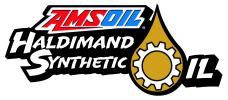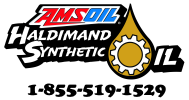
How Does Motor Oil Become Contaminated?
Motor oil contamination occurs when dirt, fuel, metal particles and other contaminants amass in the oil. It also takes place when chemical changes, such as additive depletion and oxidation, take place in the oil itself. For best protection, it’s important to use a good motor oil that withstands the effects of contamination and will continue to protect your engine.
Let's look at the causes of oil contamination.
Abrasives
Dust and Dirt
The design limitations of air cleaners, some oil fill caps and crankcase ventilation systems allow a certain level of dust and dirt into the engine, while leaks in the intake system can permit unfiltered air to enter the engine. Proper maintenance of the engine and its accessories can minimize the amount of contaminants entering the lubrication system and extend engine life.
Metal Particles
Normal wear of engine parts produces very small metal particles that are picked up and circulated by the oil. Particles of road dust and dirt increase wear rates and generate larger, even more abrasive metal particles that are circulated through the engine by the oil. While oil filters help keep these particles at a minimum, they can’t remove them entirely. That’s why it’s vital to use a premium oil filter with a high efficiency rating, like AMSOIL Oil Filters.
Combustion By-Products
Water
Combustion produces water vapor, or steam. When engine temperatures are high, most of the water remains in vapor form and exits through the exhaust. However, when engine temperatures are low, such as at start-up, warm-up and during short-trip operation in low ambient temperatures, the water vapor condenses (turns into a liquid) on cylinder walls and enters the crankcase oil, where it leads to sludge and corrosion.
Acids
The combustion process produces acidic gases which, like water vapor, condense on cylinder walls at cold engine temperatures and find their way into the crankcase oil. The gases combine with water to cause corrosion.
Soot and Carbon
Incomplete combustion produces soot, carbon and other deposit-forming materials. An engine running too “rich,” or with too much fuel, increases contaminant levels. Light-load, low-speed gasoline engine operation and high-load, low-speed diesel engine operation increase levels of these combustion by-products.
Dilution
When an engine is started or running abnormally, some unburned fuel is deposited on cylinder walls, leaking past the rings and into the crankcase, where it reduces oil viscosity. Fuel dilution decreases oil film strength and increases oil consumption. Although this is only a minor problem when engine operation is at high-speed or high-temperatures, it can be a significant problem in vehicles consistently used for short-trips.
Although all motor oils eventually succumb to contamination and must be changed, high-quality synthetic oils – like AMSOIL synthetic motor oils – deliver superior protection for longer, due to their higher-quality base stocks and additives.





 Canada
Canada United States
United States